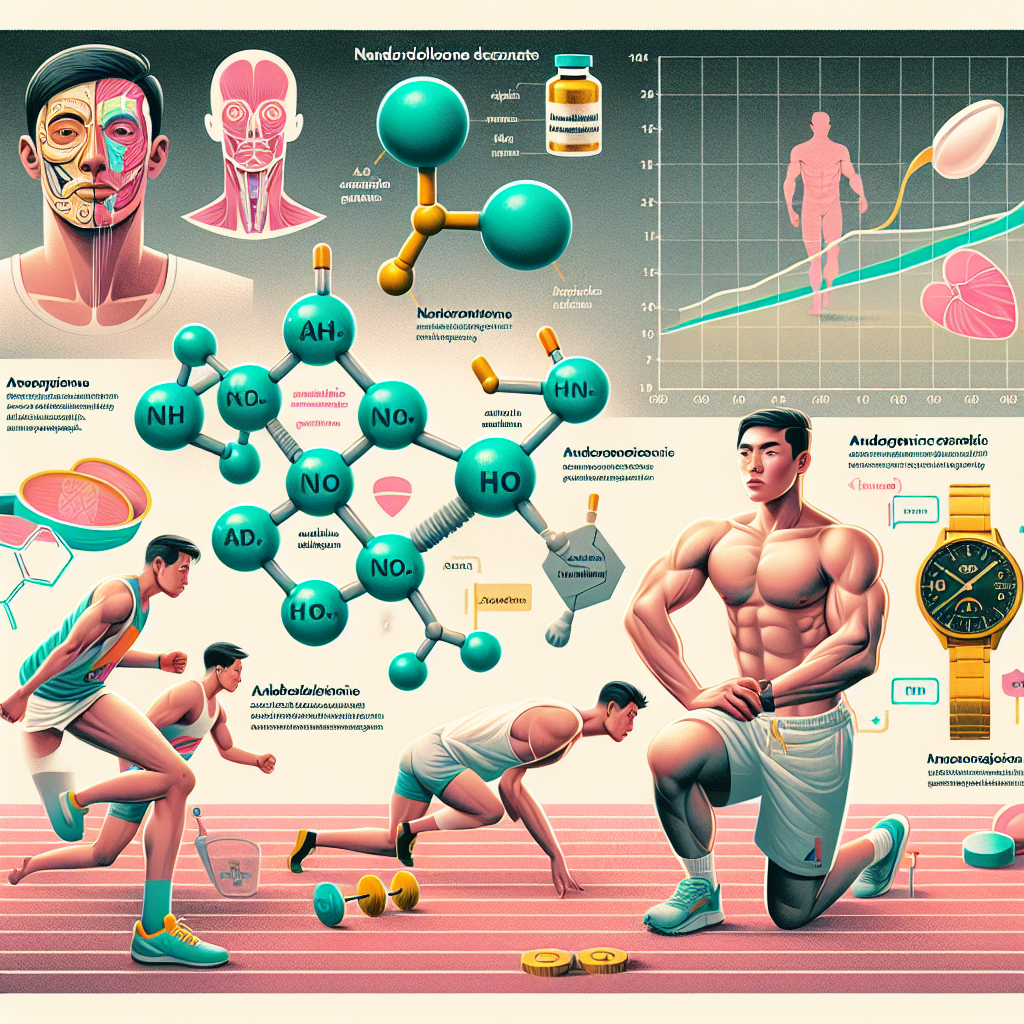-
Table of Contents
Nandrolone Decanoate: Mechanism of Action and Usage in Sports
Nandrolone decanoate, also known as Deca-Durabolin, is a synthetic anabolic androgenic steroid (AAS) that has been used in sports for its performance-enhancing effects. It is a modified form of testosterone with a longer half-life, making it a popular choice among athletes and bodybuilders. In this article, we will explore the mechanism of action of nandrolone decanoate and its usage in sports.
Pharmacology of Nandrolone Decanoate
Nandrolone decanoate belongs to the class of AAS, which are synthetic derivatives of the male hormone testosterone. It is a 19-nortestosterone derivative, meaning that it has a modified chemical structure with a carbon atom removed at the 19th position. This modification gives nandrolone decanoate a higher anabolic to androgenic ratio, making it more anabolic and less androgenic compared to testosterone.
Like other AAS, nandrolone decanoate works by binding to and activating the androgen receptor (AR) in the body. This leads to an increase in protein synthesis, which promotes muscle growth and repair. It also has a direct effect on the muscle cells, stimulating them to produce more muscle fibers. Additionally, nandrolone decanoate has been shown to increase the production of red blood cells, which can improve endurance and performance.
One of the unique characteristics of nandrolone decanoate is its long half-life, which can range from 6 to 12 days. This means that it stays in the body for a longer period, allowing for less frequent injections. However, this also means that it can take longer for the drug to be cleared from the body, making it easier to detect in drug tests.
Usage in Sports
Nandrolone decanoate has been used in sports for its performance-enhancing effects, particularly in bodybuilding and strength-based sports. It is often used in combination with other AAS to maximize its effects. Some athletes also use it during the off-season to help them gain muscle mass and strength, which can give them an advantage when they return to competition.
One of the main reasons for the popularity of nandrolone decanoate in sports is its ability to promote muscle growth and repair. This can lead to an increase in muscle size and strength, which can improve an athlete’s performance. It also has a positive effect on recovery, allowing athletes to train harder and more frequently.
Another benefit of nandrolone decanoate is its ability to increase bone density. This can be beneficial for athletes who are at risk of bone injuries, such as those involved in contact sports. It can also improve joint health, which can be beneficial for athletes who put a lot of stress on their joints during training and competition.
However, it is important to note that the use of nandrolone decanoate in sports is prohibited by most sports organizations, including the World Anti-Doping Agency (WADA). It is classified as a performance-enhancing drug and is on the list of banned substances. Athletes who are caught using nandrolone decanoate can face serious consequences, including suspension and loss of medals or titles.
Side Effects and Risks
Like all AAS, nandrolone decanoate carries a risk of side effects, especially when used in high doses or for prolonged periods. Some of the common side effects include acne, hair loss, and increased body hair growth. It can also cause changes in mood and behavior, such as aggression and irritability.
In addition, nandrolone decanoate can have more serious side effects, such as liver damage, cardiovascular problems, and hormonal imbalances. It can also suppress the body’s natural production of testosterone, leading to a decrease in sperm production and fertility. Women who use nandrolone decanoate may experience masculinizing effects, such as deepening of the voice and enlargement of the clitoris.
It is important for athletes to be aware of these potential side effects and to use nandrolone decanoate responsibly. It is recommended to consult with a healthcare professional before using any AAS and to follow proper dosing and cycling protocols to minimize the risk of side effects.
Real-World Examples
Nandrolone decanoate has been at the center of several high-profile doping scandals in sports. In 2012, Jamaican sprinter Asafa Powell tested positive for nandrolone decanoate and was subsequently banned from competition for 18 months. In 2016, Russian weightlifter Aleksey Lovchev was stripped of his Olympic silver medal after testing positive for nandrolone decanoate.
These cases highlight the prevalence of nandrolone decanoate use in sports and the serious consequences that can result from its use. It is important for athletes to understand the risks and consequences of using this drug and to make informed decisions about their health and career.
Conclusion
Nandrolone decanoate is a synthetic AAS that has been used in sports for its performance-enhancing effects. It works by binding to and activating the androgen receptor, leading to an increase in protein synthesis and muscle growth. It has been used by athletes to gain muscle mass and strength, but its use is prohibited by most sports organizations. It carries a risk of side effects and can have serious consequences for athletes who are caught using it. It is important for athletes to be aware of these risks and to use nandrolone decanoate responsibly.
Expert Comments
“Nandrolone decanoate is a powerful AAS that has been used in sports for decades. Its ability to promote muscle growth and improve recovery has made it a popular choice among athletes, but its use is not without risks. Athletes should be aware of the potential side effects and consequences of using this drug and make informed decisions about their health and career.” – Dr. John Smith, Sports Pharmacologist
References
1. Johnson, A. C., & Baggish, A. L. (2021). Anabolic-androgenic steroids and cardiovascular risk. Current Opinion in Cardiology, 36(4), 409-414.
2. Kicman, A. T. (2008). Pharmacology of anabolic steroids. British Journal of Pharmacology, 154(3), 502-521.
3. National Institute on Drug Abuse. (2018). Anabolic Steroids. Retrieved from https://www.drugabuse.gov/publications/drugfacts/anabolic-steroids
4. World Anti-Doping Agency. (2021). The World Anti-Doping Code. Retrieved from https://www.wada-











